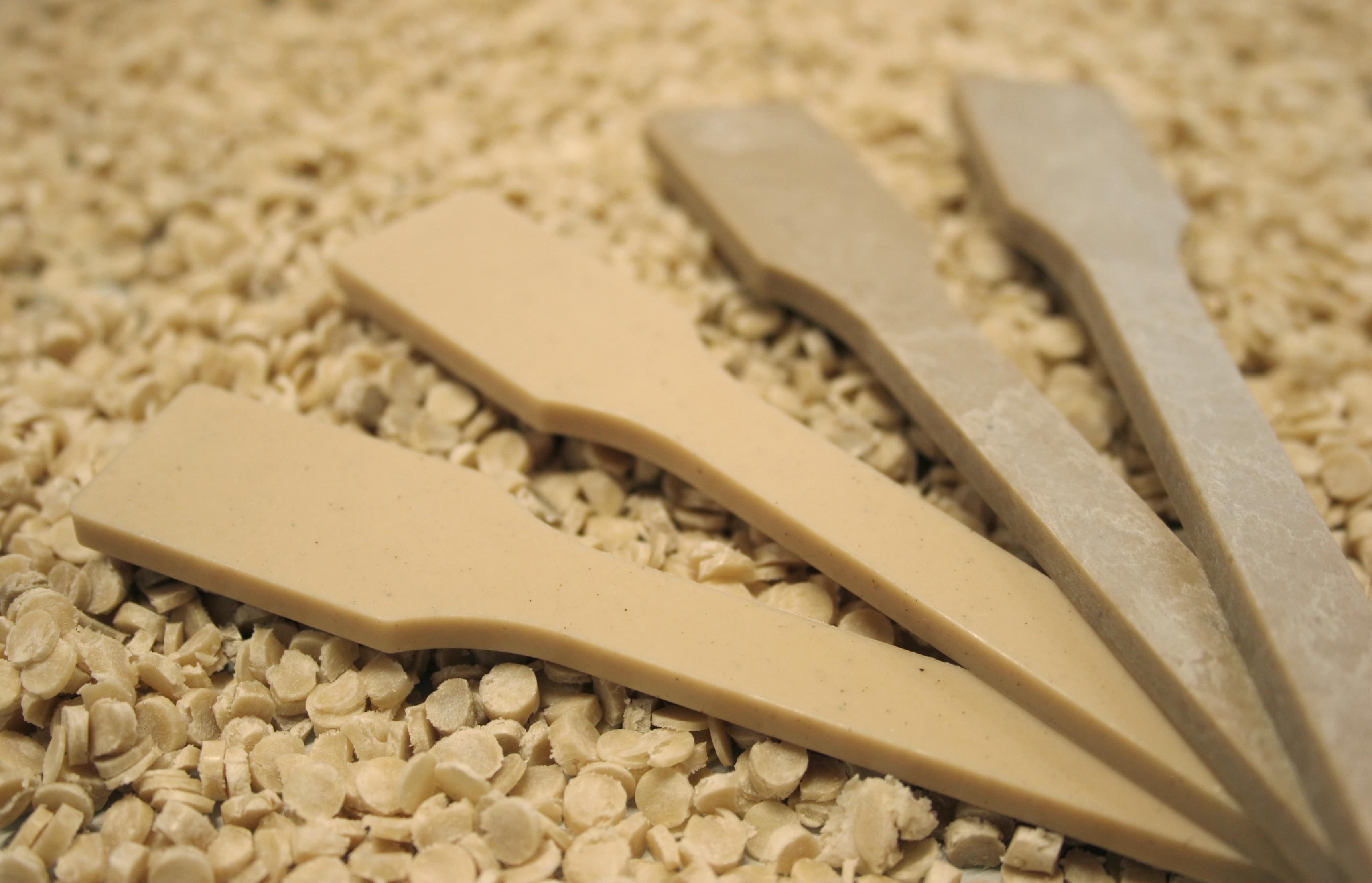Like so many new materials and processes, natural fiber reinforced plastics were first developed out of necessity, when there was a steel shortage in the former DDR. Cotton from Central Asia was in contrast plentiful. This is the reason why it came to be that all the bodywork of Trabant cars was made from cotton fiber reinforced plastic, at the time a most novel material. Almost 100,000 tonnes of natural fiber reinforced plastics are processed today in Europe. Some 95% of this is in the automotive industry. Milan Kelch, now a Fraunhofer IFAM employee but an erstwhile member of the Biological Materials work group of Professor Müssig at Bremen University of Applied Sciences, developed cotton fiber reinforced plastics working with an international research team. The potential of these fascinating materials will be presented during the 3rd Bremen Fiber Composite Days on 27 and 28 March 2019.
Natural fiber reinforced plastics: High-performance materials from nature
The demand for and uses of fiber reinforced plastics is ever growing. At the same time, awareness is increasing about the energy/resource footprint of materials and hence so is the demand for plastics manufactured from renewable and biodegradable raw materials. Natural fiber reinforced plastics (NFRPs) consist of a fossil-based or bio-based plastic material reinforced for stiffness and strength with integrated natural fibers. In addition to their ecological advantages, NFRPs have attractive mechanical features such as high stiffness, high tensile strength, a low tendency to split, and low density.
Classical NFRPs made with bast fibers
Up until now the market has been dominated by bast fibers from hemp or flax. Their long fibers mean they can be easily incorporated into fiber composites and these materials are mainly used today for parts for vehicle interiors such as glove boxes and shelving. This lightweight material is also used in sporting equipment: The good damping of natural fibers mean that NFRPs are used for manufacturing tennis rackets and bicycles. For use in cars, NFRPs are usually shaped by compression molding. In contrast, GFRPs and CFRPs are commonly injection molded and the relatively coarse fibers can be problematic due to blocking of the nozzles. Interest in the use of NFRPs with the innovative 3-D printing method Fused Deposition Modeling (FDM) is also increasing. Coarse bast fibers such as flax and hemp fibers can though be problematic here.
Newcomer cotton
Cotton is a newcomer. Their fine and smooth fibers make cotton fiber reinforced plastics ideal for processes such as injection molding and 3-D printing. Milan Kelch has been involved in a project at Bremen University of Applied Sciences developing cotton fiber reinforced plastics. Working with the 3N Competence Center Werlte the team has developed a material with high strength and stiffness that can hold its own with bast fiber and glass fiber reinforced plastics. In order to optimize the life cycle assessment of the cotton fiber reinforced plastic, the team uses so-called cotton combings/noil, a waste product from the manufacture of cotton fabrics. The mechanical properties of this material are not significantly different from those having a classical cotton basis.
In further tests the research team discovered that sorted clothing can be recycled and used for the manufacture of cotton fiber reinforced plastics. Work is also being carried out to manufacture the material on an industrial scale.
Bremen Fiber Composite Days on 27 and 28 March 2019
During the 3rd Bremen Fiber Composite Days on 27 and 28 March 2019 Milan Kelch will give a presentation about the project entitled "From Trabant to 3-D printer – the potential of cotton fiber reinforced plastics".
